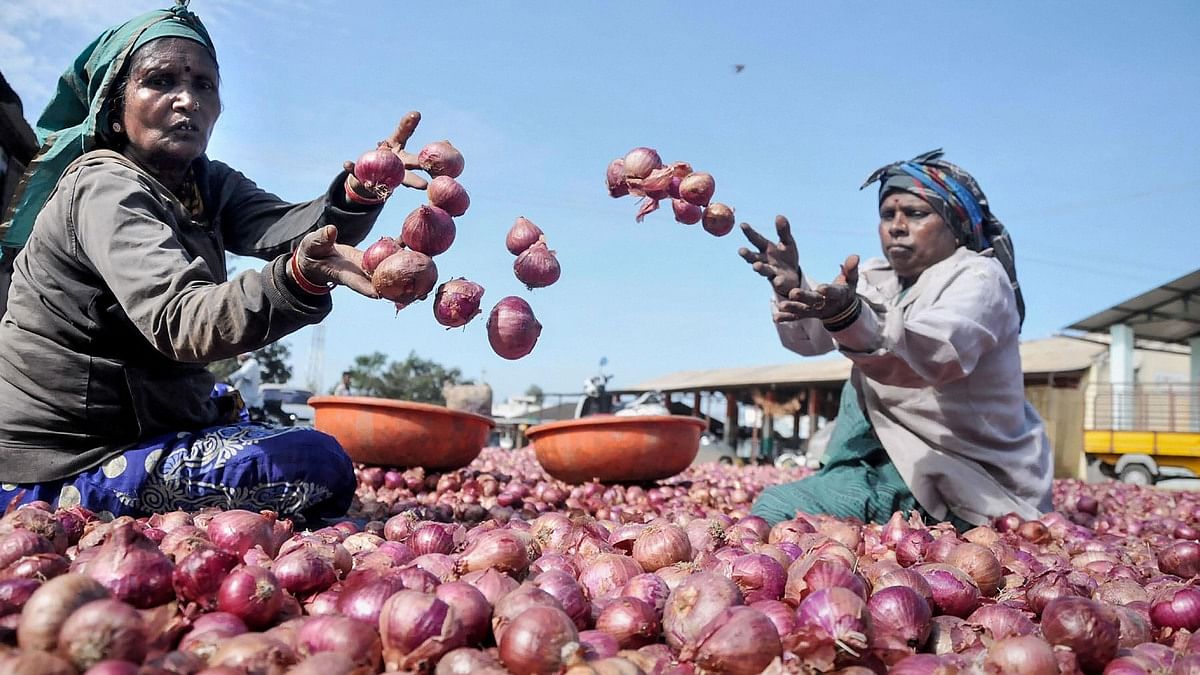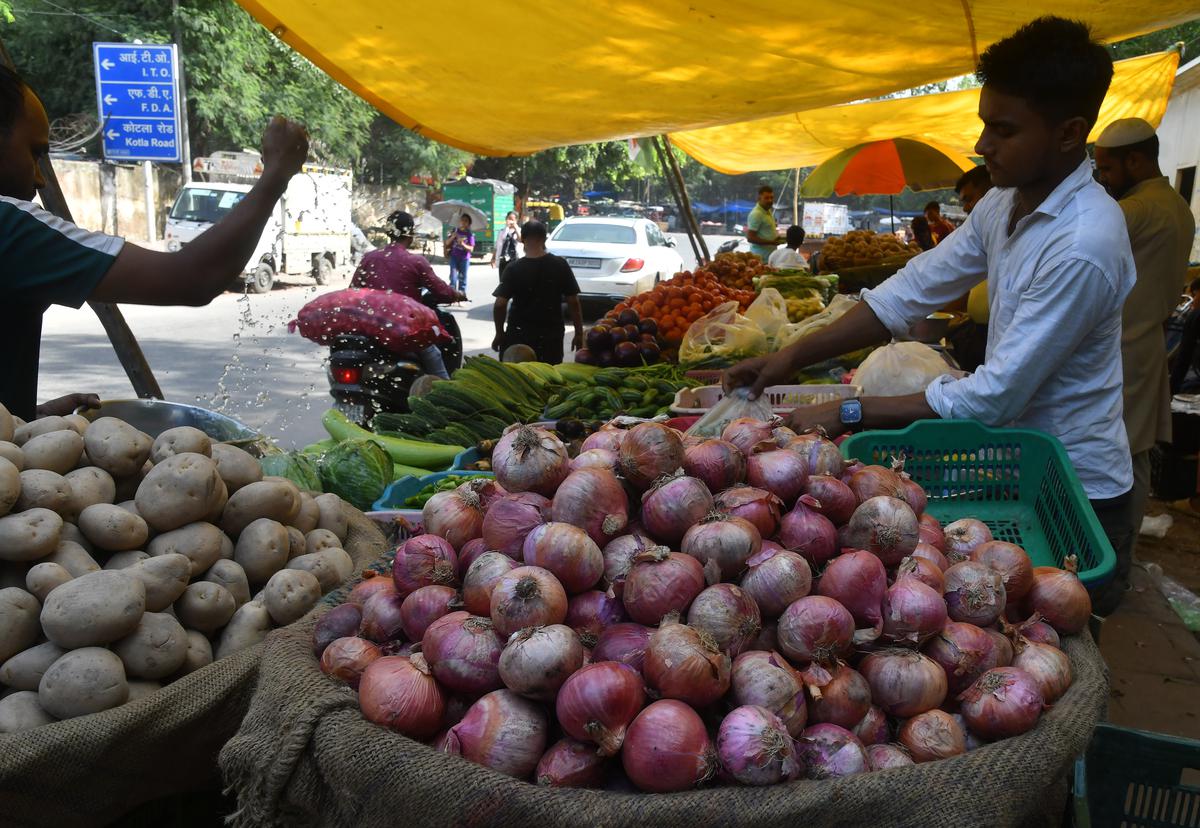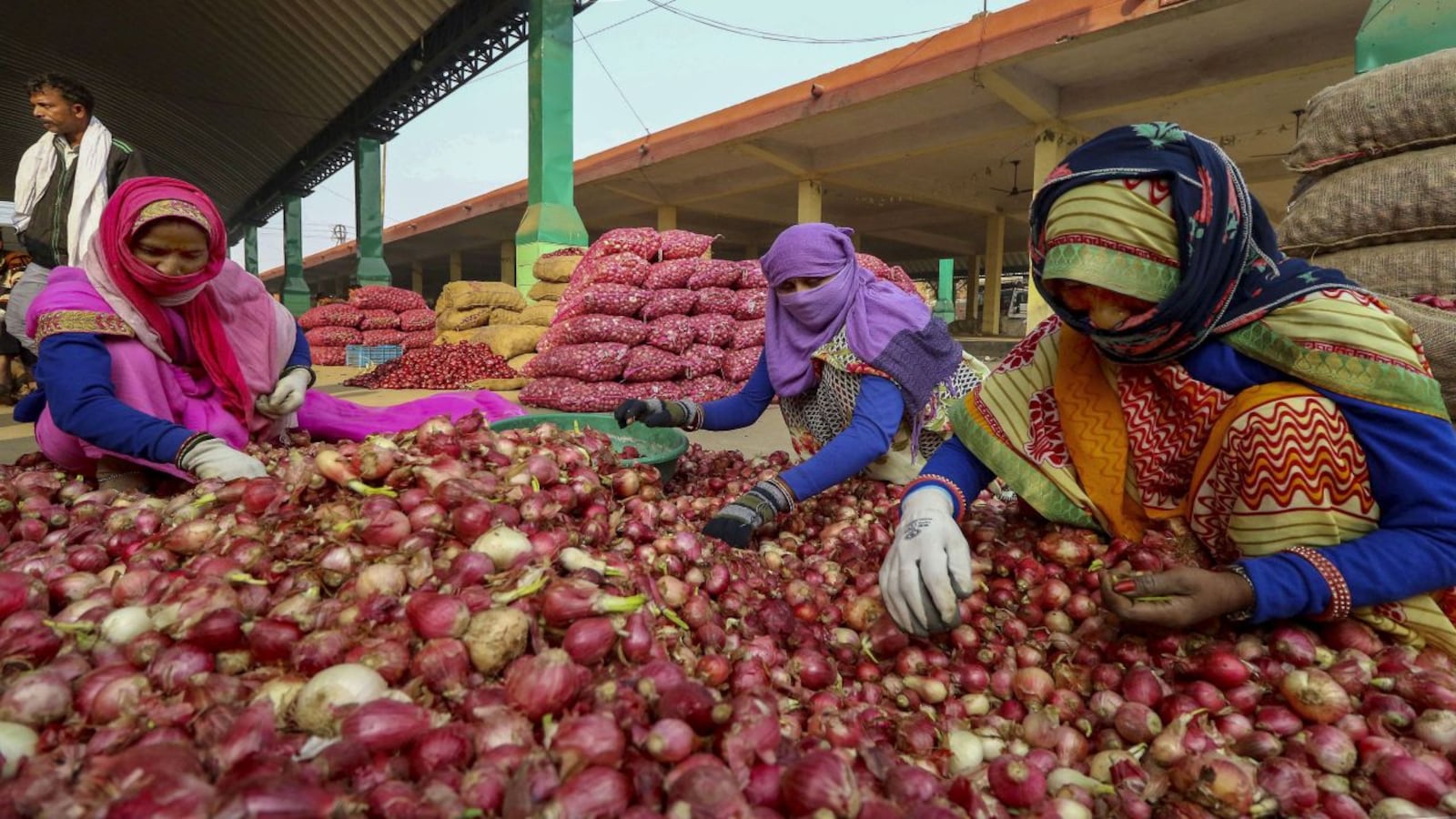Government Imposes Steep MEP of $800/tonne on Onion

Government Imposes Steep MEP of $800/tonne on Onion
Onions are a staple ingredient in countless cuisines worldwide, serving as a fundamental element in a wide array of dishes. In many countries, they are a dietary staple and hold immense economic significance.
However, the volatility in onion prices has often been a cause for concern. In an attempt to regulate this volatility, governments often resort to Minimum Export Price (MEP) mechanisms.
The government’s recent decision to impose a Minimum Export Price (MEP) of $800/tonne on onion exports has been the topic of much debate among agricultural economists, trade experts, farmers, and consumers.

Minimum Export Price (MEP) is a tool employed by governments to control the export of certain commodities, including onions. Essentially, MEP sets a floor price below which onions cannot be exported. When the international market price falls below this floor, exports become economically unviable, thus preventing the exodus of onions from the domestic market. Governments use MEP to stabilize domestic prices, ensure sufficient supply, and protect consumers from the vagaries of the global market.
Reasons for the High MEP on Onions
- Price Stability: One of the primary reasons for imposing a ‘high’ MEP on onions is to stabilize domestic prices. Onions are a politically sensitive commodity, and their price fluctuations can lead to public outcry and dissatisfaction with the government. A high MEP serves as a safeguard, preventing large-scale exports that could lead to a sudden shortage and price hike in the domestic market.
- Supply Assurance: By imposing a high MEP, the government aims to ensure an adequate supply of onions within the country. This is especially crucial in countries where onions are a dietary staple. A sudden surge in exports could lead to a scarcity of onions, affecting the daily lives of citizens.
- Farmer Welfare: Governments may also impose a high MEP as a measure to protect the interests of onion farmers. When onion prices are high in the international market, farmers may be tempted to sell their produce abroad, potentially causing a shortage in the domestic market. A high MEP guarantees that farmers receive reasonable prices for their crops, thereby preventing them from seeking better prices overseas.
- Food Security: Onions are an essential ingredient in many food preparations. A sudden shortage can disrupt food supply chains, affecting not only the economy but also food security. A high MEP acts as a buffer, ensuring that the domestic market’s needs are met before any surplus is exported.

Implications of the High MEP on Onions
- Inflation Control: A high MEP can help control inflation by preventing sudden spikes in onion prices. This benefits consumers by ensuring that this essential commodity remains affordable.
- Reduced Export Earnings: While the MEP protects domestic interests, it can hinder the earnings of onion exporters. Exporters may find it less profitable to ship onions at the fixed MEP, leading to reduced export revenues.
- Potential Smuggling: A high MEP may incentivize illegal smuggling of onions to neighboring countries where prices are higher. This can undermine the government’s efforts to stabilize domestic prices.
- Trade Relations: Imposing a high MEP could strain trade relations with onion-importing countries. Diplomatic negotiations may be necessary to address any concerns raised by trading partners.
- Farmer Income Stability: The high MEP ensures that farmers receive a stable income for their onion crops, reducing their vulnerability to market fluctuations. This can contribute to rural stability and agricultural growth.
The imposition of a ‘high’ MEP of $800/tonne on onions by a government is a strategic move aimed at stabilizing domestic prices, ensuring supply security, and protecting the interests of farmers.

While it has several benefits, including inflation control and farmer welfare, it may also have consequences such as reduced export earnings and potential smuggling.
Balancing these factors requires a delicate policy approach that considers both domestic and international factors, ultimately aiming to strike a sustainable equilibrium in the onion market.
The Minimum Export Price (MEP) is a tool employed by the government to regulate the export of certain products. It is essentially a floor price below which an item cannot be exported. The main aim of this mechanism is to ensure the availability of a product in the domestic market, to stabilize prices, and to prevent shortages.
Onions, a staple in Indian cooking, often witness price volatility due to factors such as seasonal variations, crop failures, and storage issues. A high MEP can deter exporters from selling abroad, thereby increasing domestic supply and potentially stabilizing or reducing prices.
In scenarios where global onion prices surge, there is a temptation for farmers and traders to export a larger portion of their produce. This can lead to domestic shortages and inflated prices. A high MEP acts as a deterrent, ensuring that onions remain available for local consumers.

Food inflation, particularly in essential commodities like onions, can have broader macroeconomic implications. Keeping onion prices in check can assist in controlling overall inflation rates.
While the MEP is designed to ensure domestic availability, it may also mean that farmers are unable to capitalize on higher prices in international markets.
This can impact their profits, especially if they had cultivated onions anticipating higher returns from exports.
Sudden changes in export policies, such as imposing a high MEP, can strain trade relations with importing countries. These nations might turn to more reliable trading partners, which can hurt India’s position as a trusted exporter in the long run.
India faces significant post-harvest losses, and onions, being perishable, are particularly vulnerable.

With reduced exports due to a high MEP, there’s a risk that a surplus might lead to wastage if adequate storage facilities are not available.
Artificial price interventions can sometimes lead to market distortions. By not allowing market forces to determine prices organically, there’s a risk of either overproduction or underproduction in subsequent seasons.
The imposition of MEP is not unique to onions. The government has, in the past, used this tool for other commodities such as rice, wheat, and pulses, depending on the domestic supply-demand situation.
It underscores the delicate balance that governments must strike between protecting the interests of consumers and ensuring that producers get a fair price for their produce.
The government’s decision to levy a ‘high’ MEP of $800/tonne on onion exports highlights the challenges in managing the agricultural supply chain and ensuring food security.

While such measures can provide short-term relief from price spikes, a comprehensive approach encompassing better storage facilities, improved forecasting, and deeper market reforms will be pivotal in addressing the cyclical issues faced by the onion market in India.




